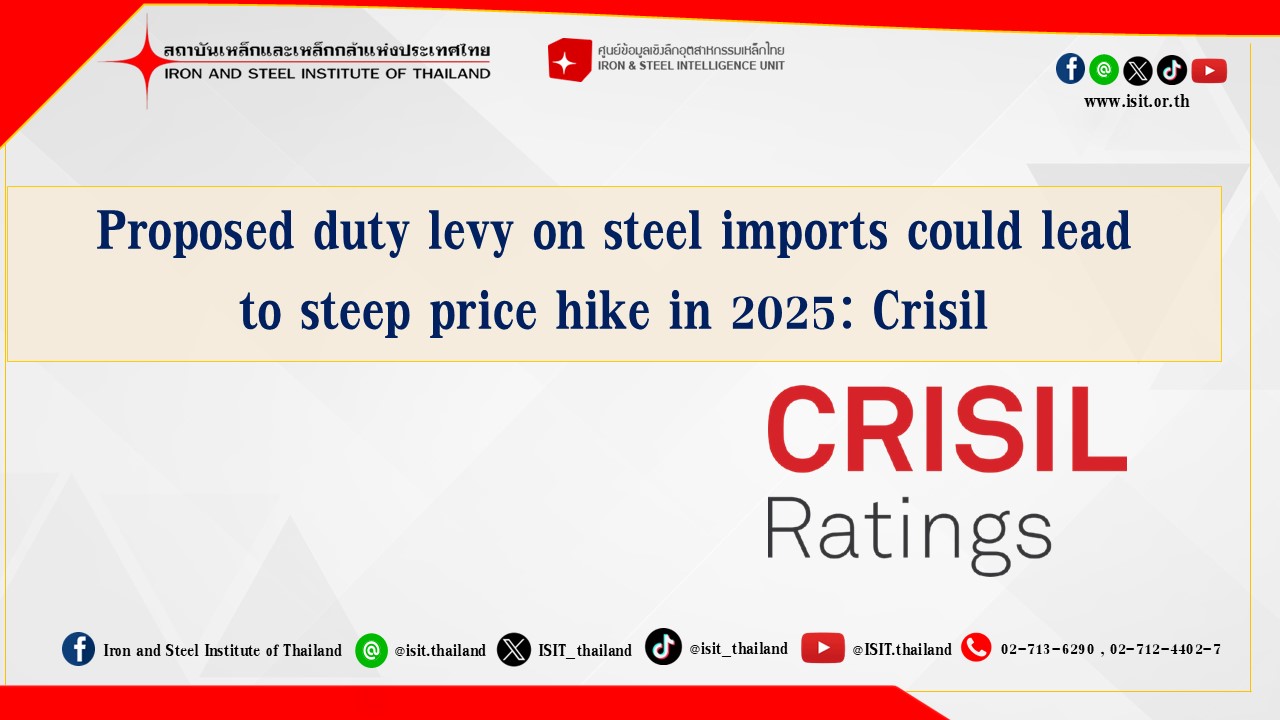
Steel prices in 2025 would be much higher than the last year if the proposed safeguard duty on steel imports is imposed by the end of next month, rating agency Crisil said on Wednesday. "Domestic prices are under pressure due to global steel price decline and are expected to remain soft in 2025. Prices have a 4-6 per cent upside potential hinged on implementation of the safeguard duty.
"As mills ramp up production volume from the newly commissioned capacities, increase in supply will reduce flat steel prices, but will still be higher than average price of 2024. That said, intense competition among mills to gain market share could limit the upward movement," Vishal Singh, Director-Research at Crisil Market Intelligence and Analytics, said in a statement.
The imposition of a safeguard duty proposed by the industry could be a positive here. Assuming it is implemented by the end of February, steel prices in 2025 would be much higher than 2024, with the impact more prominent in the first half, the statement said.
Last year, steel prices in the domestic market declined due to additional availability of the metal backed by an increase in net imports.
The rating agency further said that domestic steel demand will continue to outpace other major steel consuming economies in the current year with a growth of 8-9 per cent due to shift towards steel-intensive construction in the housing and infrastructure sectors along with better demand from engineering, packaging and other segments
In 2024, global steel demand is estimated to have declined one per cent. Demand in China, the largest steel producer and consumer, declined 3.5 per cent, led by declining steel demand from the real estate sector, despite conducive policy changes and release of support packages.
Steel demand from Europe, Japan and the US also logged an estimated de-growth of 2-3 per cent, the agency said.
However, demand growth in developing economies such as India and Brazil kept global demand from declining steeply. Demand is estimated to have increased 11 per cent in India, 5.6 per cent in Brazil and 2.7 per cent in other steel consuming economies, it said.